This article was co-authored by Lisa Bryant, ND. Dr. Lisa Bryant is Licensed Naturopathic Physician and natural medicine expert based in Portland, Oregon. She earned a Doctorate of Naturopathic Medicine from the National College of Natural Medicine in Portland, Oregon and completed her residency in Naturopathic Family Medicine there in 2014.
There are 18 references cited in this article, which can be found at the bottom of the page.
This article has been viewed 14,025 times.
Warts can be a nuisance, and they usually take a long time to go away on their own. It often takes several trips to the dermatologist to get rid of them, but you can avoid that hassle by trying some home remedies as well. These treatments are inexpensive and require no prescriptions. If you have warts anywhere besides your face or genitals, then give these remedies a try. If none of them work and the wart is still there after 2 months, see your dermatologist for further treatment.
Steps
Using Duct Tape
-
1Apply a small piece of silver duct tape over the wart. Get a roll of plain, silver duct tape from a hardware store. Then peel off a strip just large enough to cover the wart, and cut it to size if you have to. Press it down onto the wart and smooth it out so there are no air bubbles underneath the tape.[1]
- There is some disagreement on how effective this treatment is, but it does show some positive results for getting rid of warts. It's also harmless, so there is no risk in trying it.[2]
- You can even curve the edges of the tape bandage a bit with scissors to make the tape more comfortable.
-
2Peel the duct tape off after 6 days. Let the tape work by cutting off the wart from its nutrients. When 6 days pass, grasp the tape by one corner and slowly peel it off the wart. Discard the duct tape in the trash, as you will cut a new piece to put over it.[3]
- If the duct tape comes loose before 6 days pass, replace it right away. You need to keep the wart covered for this treatment to work.[4]
- When you remove the tape, you'll see that the skin underneath became wrinkly. That's normal, and it's how the tape kills the wart.
- Wash your hands after handling the tape and don't let anyone else touch it. It can spread the wart virus.
Advertisement -
3Soak the wart in warm water for 15-20 minutes. After you take the tape off, fill a bowl with warm water. Then soak the area for 15-20 minutes so the wart starts to soften.[5]
- Test the water to make sure it's not too hot. Otherwise you could get burned.
- If the area doesn't look like it's softened, soak it a bit more.
-
4Exfoliate the wart with a pumice stone after soaking it. The soaking process loosens and softens the dead tissue around it. Take a pumice stone and gently scrub directly over the wart. This removes dead tissue and helps the wart heal faster.[6]
- You can also use an emery board instead if you don't have a pumice stone.
- Don't exfoliate too hard. If you feel any sharp pains or start bleeding, stop the treatment.
- Wash the pumice stone after you use it and don't let anyone else use it. It could spread the wart virus to someone else.
-
5Leave the wart uncovered over night. Don't replace the tape right away. Let the wart breathe for about 12 hours after you remove the tape, so sleep with it uncovered.[7]
-
6Add a new piece of duct tape the next morning. Cut a new piece of duct tape to fit and put it on the wart the same way you did the first time. Leave it on for another 6 days and then repeat the process of soaking and scrubbing the wart again.[8]
- The wart will probably get smaller as you do these treatments. That's because the pumice stone grinds away pieces of the wart.
-
7Repeat the treatment for 2 months or until the wart disappears. It takes several weeks for this treatment to get rid of a wart. Continue the process and monitor the wart to see if it's improving. Stop when the wart disappears or after 2 months pass.[9]
- If you still have the wart after 2 months, then visit a dermatologist for further treatment.
Using Different Natural Remedies
-
1Apply garlic extract to the wart. Garlic contains some natural antiviral properties and could fight warts. Get a bottle of liquid garlic extract and drip some onto the wart. Cover the wart with a band-aid to keep the garlic over it. Reapply the garlic every day for 2 months or until the wart disappears.[10]
- You can find garlic extract at health stores, pharmacies, or online.
- You could also use freshly-cut garlic instead of garlic extract. Slice a clove very fine and press the pieces onto the wart. Cover it with a band aid to hold the garlic in place. Continue this treatment every day for 2 months.[11]
-
2Submerge the wart in hot water to reduce the wart's size. Hot water can gradually kill cutaneous warts on the hands and feet. This may be because the high temperatures kill the HPV virus. Heat some water on a stovetop until it's 113 to 118 °F (45 to 48 °C). Transfer the water to a heat-proof bowl and dip the affected area in. Soak it for 10-15 minutes and repeat the treatment every day to see if the wart improves.[12]
- Test the water with your fingertip before submerging your hand or foot to make sure you can tolerate the heat. If the water is too hot, let it cool down before soaking the wart.
- Do not bring the water to a boil. This is much too hot and will burn your skin.
-
3Rub cod liver oil onto the wart for a vitamin A treatment. Cod liver oil is rich in vitamin A, which can boost your body's immune response and treat warts with a topical application. Get a bottle of cod liver oil and dab it onto the wart with a cotton swab. Leave the oil on for 5-10 minutes so it can absorb into your skin. Dab up any excess.[13]
- You can also puncture cod liver tablets with a needle and squeeze the oil onto your wart.
- This process can take up to 6 months to completely clear your warts.
-
4Try taking zinc sulphate orally to treat warts. Zinc may help boost your body's immunity and ability to fight off the wart. This supplement is available over the counter. Take 10 milligrams per 2.2 pounds (1.00 kg) of your body weight, up to 600 milligrams per day. [14]
- This treatment may take several weeks to work.
- Always talk to your doctor before taking a dietary supplement. Most are harmless, but some could interact with medication that you take.
-
5Dab tea tree oil on to the wart. This oil, also called alternifolia oil, has shown some success in treating warts because of its antimicrobial properties. Apply a dab of oil to the wart every day after you bathe, so your pores are open. Continue this treatment for 2 weeks to see if there is any improvement.[15]
- You can buy this type of oil online. Make sure the oil is 100% pure and not mixed with any additives.
Seeking Medical Care
-
1See your doctor if you have skin growths you can’t identify. While warts are usually harmless, it can sometimes be hard to tell them apart from more dangerous skin conditions, such as skin cancer. If you notice a growth on your skin and are not sure what it is, make an appointment with your doctor. They can examine the growth and possibly take a tissue sample to determine what it is.[16]
- Other common types of benign skin growths include moles and skin tags.
-
2Let your doctor know if your warts are severe or persistent. Occasionally, warts can cause troublesome symptoms. If your warts are painful or uncomfortable, or if they aren’t getting better with natural remedies, talk to your doctor. They may be able to recommend medical remedies that can help.[17]
- For especially large or uncomfortable warts, your doctor may recommend using a medicinal peel or removing the warts surgically.
- Let your doctor know if you notice your warts changing, growing, becoming painful, cracking, or bleeding.
-
3Get medical attention if you suddenly develop lots of warts. If you suddenly develop multiple warts as an adult, this may be a sign of an underlying problem with your immune system. Call your doctor if this happens so they can run tests and determine what’s going on.[18]
- Let your doctor know if you’ve noticed any other symptoms along with the development of new warts.
-
4Seek medical care if you have a bad reaction to a natural remedy. Some natural treatments can cause side effects or allergic reactions. Stop using any natural treatment and let your doctor know if you experience symptoms such as a severe rash, itching, burning, or blistering in the affected area.[19] Get emergency care if you have symptoms of a severe allergic reaction, such as difficulty breathing, nausea and vomiting, dizziness, or swelling of your face, lips, tongue, or throat.
- Before using supplements or natural remedies, talk to your doctor about any medications you’re currently taking so you can avoid harmful interactions.
- Let your doctor know if you have any other medical conditions, since these can affect which treatments and supplements you can use safely.
Warnings
- If you have adverse effects from any home remedy, stop it immediately and consult with a doctor.⧼thumbs_response⧽
- Never try to burn, cut, or puncture the wart. These treatments can cause severe pain, injury, and infections. Only a professional dermatologist should try them.[21]⧼thumbs_response⧽
- If you're over 50 and your wart develops suddenly or bleeds, see a dermatologist. Skin cancer growths can look like warts at first.[22]⧼thumbs_response⧽
References
- ↑ https://www.ncbi.nlm.nih.gov/pmc/articles/PMC6516695/
- ↑ https://www.health.harvard.edu/diseases-and-conditions/how-to-get-rid-of-warts
- ↑ https://www.health.harvard.edu/diseases-and-conditions/how-to-get-rid-of-warts
- ↑ https://health.clevelandclinic.org/weird-wart-home-remedies-and-what-works/
- ↑ https://fpnotebook.com/mobile/derm/wart/PlntrWrt.htm
- ↑ https://www.nationwidechildrens.org/specialties/dermatology/dermatology-resources/wart-treatment
- ↑ https://www.health.harvard.edu/diseases-and-conditions/how-to-get-rid-of-warts
- ↑ https://health.clevelandclinic.org/weird-wart-home-remedies-and-what-works/
- ↑ https://www.seattlechildrens.org/conditions/a-z/warts/
- ↑ https://www.ncbi.nlm.nih.gov/pmc/articles/PMC1764803/#!po=63.2530
- ↑ https://www.mountsinai.org/health-library/condition/warts
- ↑ https://www.ncbi.nlm.nih.gov/pmc/articles/PMC1764803/
- ↑ https://www.ncbi.nlm.nih.gov/pmc/articles/PMC3274422/
- ↑ https://www.ncbi.nlm.nih.gov/pubmed/11952542/
- ↑ https://www.ncbi.nlm.nih.gov/pmc/articles/PMC5435909/
- ↑ https://www.asds.net/skin-experts/skin-conditions/skin-growths
- ↑ https://www.betterhealth.vic.gov.au/health/conditionsandtreatments/warts
- ↑ https://my.clevelandclinic.org/health/diseases/15045-warts
- ↑ https://www.ncbi.nlm.nih.gov/books/NBK279585/
- ↑ https://www.hopkinsmedicine.org/health/conditions-and-diseases/other-benign-skin-growths
- ↑ https://health.clevelandclinic.org/weird-wart-home-remedies-and-what-works/
- ↑ https://www.aad.org/public/diseases/skin-cancer/types/common/bcc/symptoms
About This Article
The easiest way to remove a wart naturally is to soak the area in hot water several times a day. This can help soften and break down the wart so that you can eventually scrub it off with a pumice stone. If that doesn’t work, try holding a piece of banana or pineapple on the wart several times a day, for 5 to 10 minutes at a time. These fruits can help because they contain antimicrobial properties, which may help kill the virus that causes warts. However, if these methods seem a little too time-consuming, simply dab on a drop of essential oil with a cotton swab once or twice a day. As a general rule, people seem to have the best results with tea tree, lemon, oregano, or lavender oils, which are proven to have antimicrobial properties. For more advice from our Medical co-author, including how to remove warts using silver duct tape, keep reading!
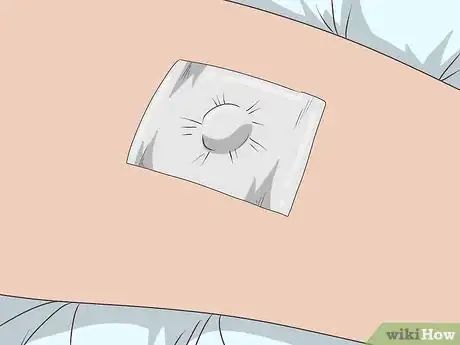

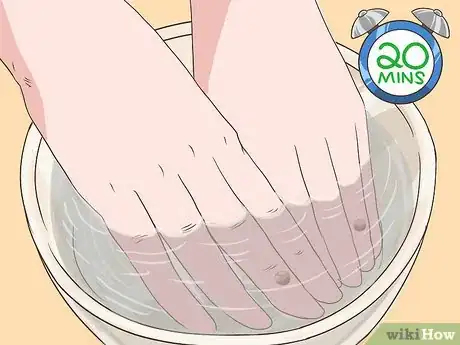
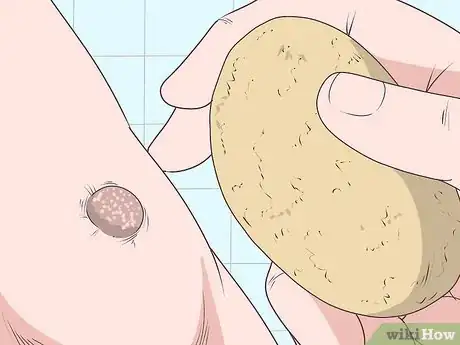
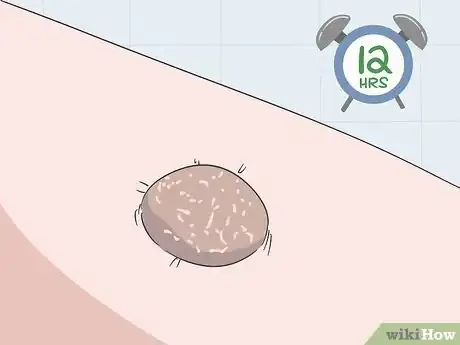
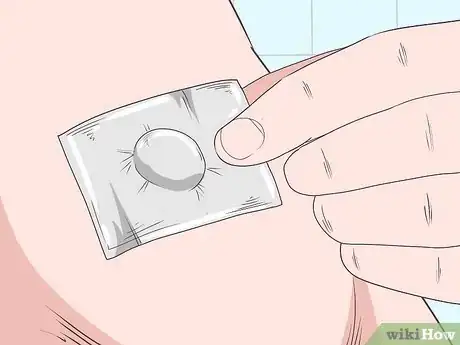
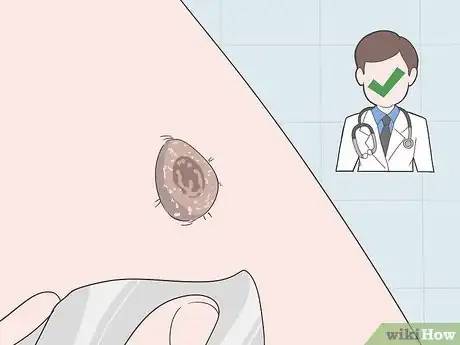
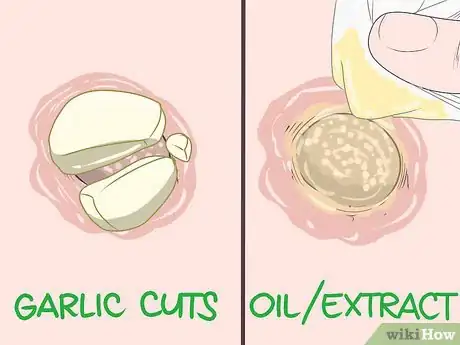
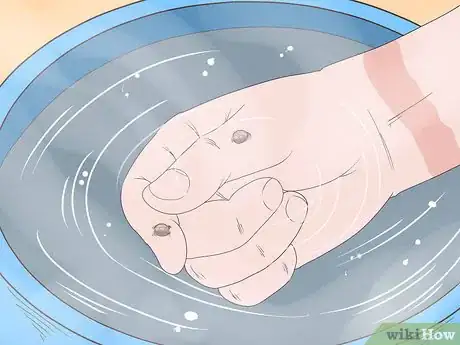
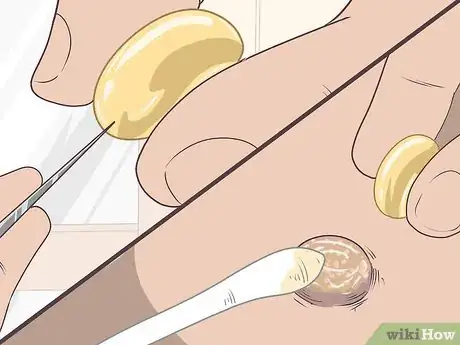
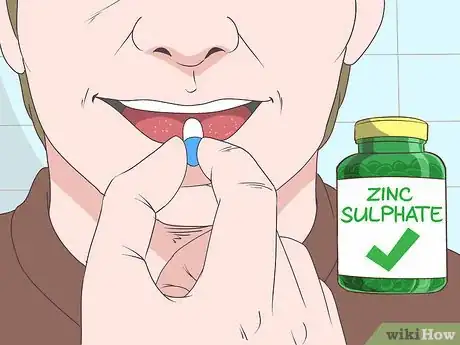
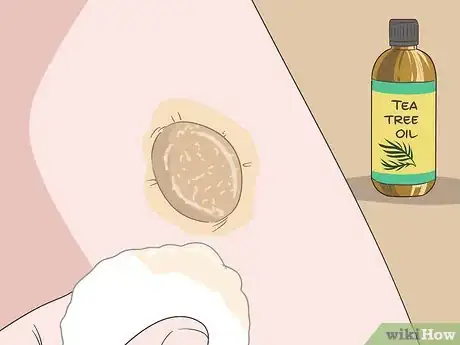
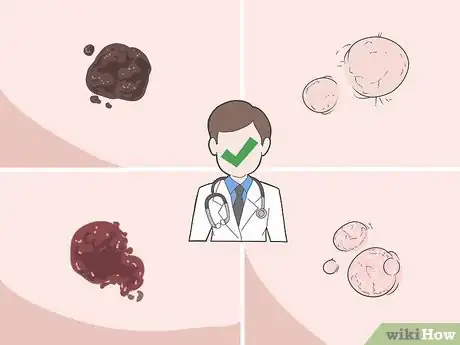
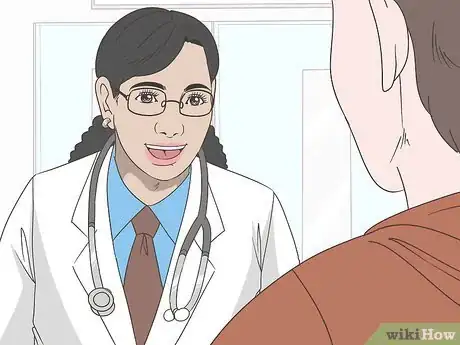
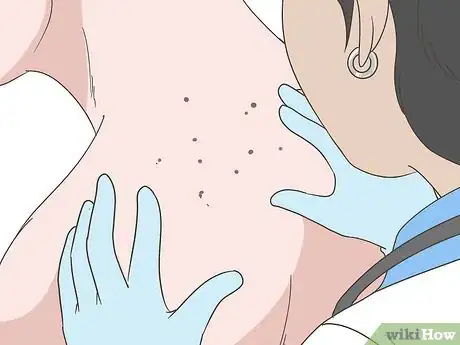
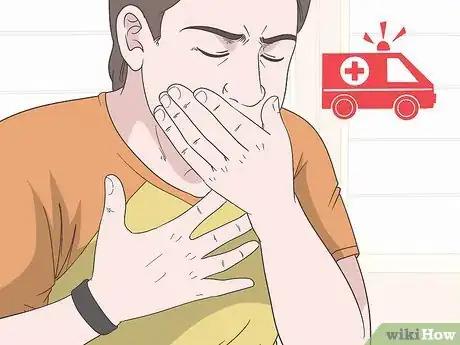

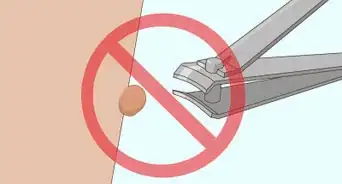

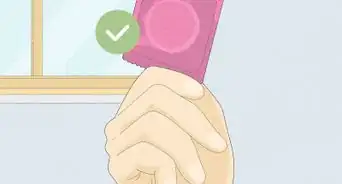
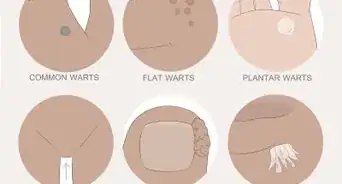



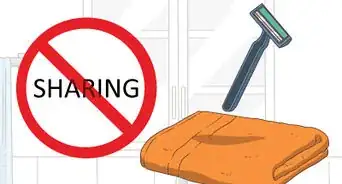
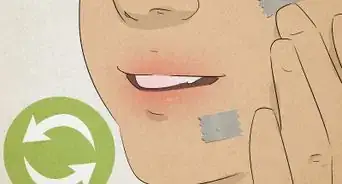
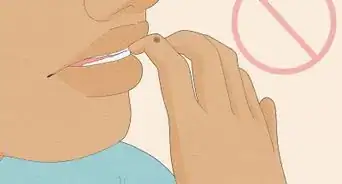

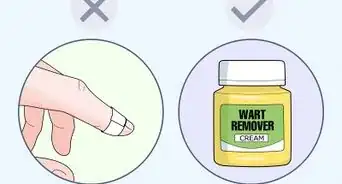
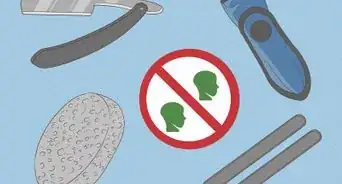







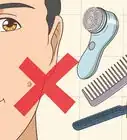
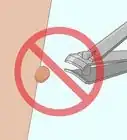

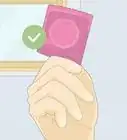



































Medical Disclaimer
The content of this article is not intended to be a substitute for professional medical advice, examination, diagnosis, or treatment. You should always contact your doctor or other qualified healthcare professional before starting, changing, or stopping any kind of health treatment.
Read More...